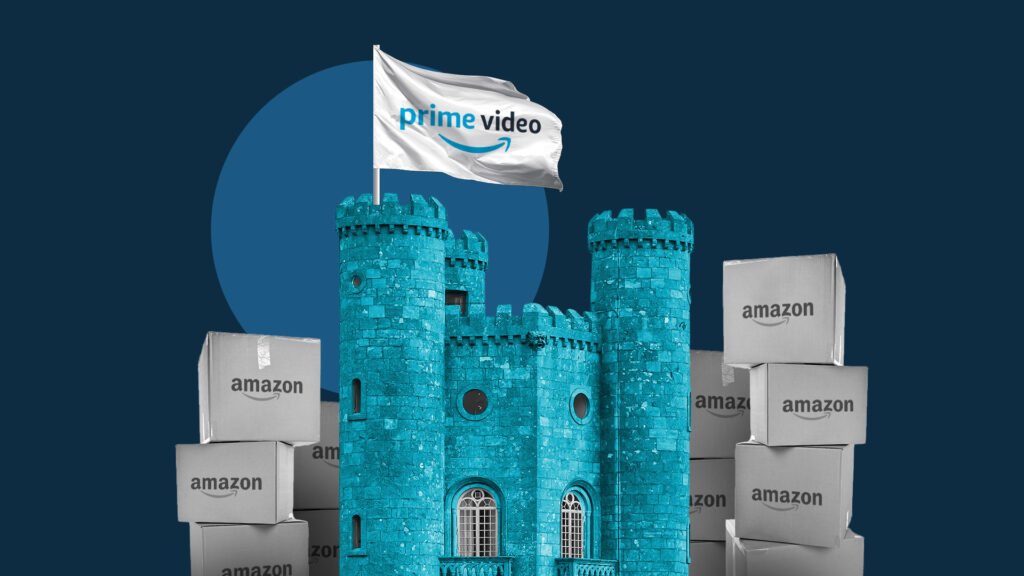From the MNTN Slack: What Netflix’s Q1 Report Signals About the Future of Streaming
by Cat Hausler
8 Min Read
CES 2024: Stagwell (STGW) and MNTN Announce Partnership in Unified Performance SolutionsLearn More
Could Amazon’s Prime hub symbolize a new direction for streaming?

4 Min Read
With the Big Game around the corner, all eyes are on the NFL — and who’s streaming it. That’ll be Amazon. As their $1 billion-a- season, 11-year deal with the NFL for Thursday Night Football continues to draw in football and sports fans, the giant’s next conquest has hit the market just in time: ad-supported streaming. This week, they launched their ad-tier, and unlike other walled gardens, Amazon has a distinct advantage — as the world’s largest online retailer and marketplace, one can only imagine the wealth of consumer data at its fingertips, making it a force to be reckoned with as the streaming wars ensue.
Morgan Stanley predicts that Amazon’s ad tier auto-opt-in is set to bring in more than $3 billion a year, but what’s next? How does an ecommerce giant with a monopoly (more or less) get more people into Prime Video and add more subscribers to a service that already has an excess of them? “Amazon Prime Video entering the video ad market continues the trend of all players trying to recreate the dual revenue stream model,” Peter Olsen, President of Ad Sales, A+E Networks, told Adweek. “The economics of streaming still haven’t found equilibrium but are coming into focus.”
But Amazon prizes “customer obsession” over competition, which means they still see this addition as continuing to swim in their own lane. (Though, at this point, they own their own pool.) According to Andrew Bennett, Vice President and Head of Video Partnerships for Amazon, Prime Video is one spoke in a gigantic wheel. “We want to make it really clear for all of our device partners that, when they think of Prime Video, [they] think of it as a hub.” In short: a one-stop shop where viewers can sign up for other subscriptions like Max and Paramount+, buy or rent movies or shows, and go shopping for anything else while they’re at it.
This is the long game many streamers are hoping to create, yet another signal that we’re headed back to the ways of cable, where signing up for one service meant also getting other “channels” (in this case, subscription services) under the one umbrella. However, Bennett has made it clear that they will continue to follow the customer’s lead and move in the direction where they “believe there’s a true incremental customer benefit.”
In case you’re wondering, “Wait, doesn’t Amazon already have a free ad-supported platform?” — yes, Freevee still lives, though the industry is now questioning its survival in the wake of Amazon’s ad-tier announcement. TVREV Co-Founder and Lead Analyst Alan Wolk expressed confusion but ultimately considers it a strategic move by Amazon to eventually draw in more paying viewers. “I suspect that most people who watch Freevee are not even aware they are watching it, [but Amazon can sell ads across both Freevee and Prime Video,] increasing the odds an advertiser can hit a target.”
Our bet: Freevee is safe for now, because it still serves a unique purpose, especially on a global scale. In the US, the majority of viewers are satisfied with ad-supported offerings, but if we look outward to high-growth potential regions like Latin America, Africa, and Southeast Asia (where GDPs are often lower), almost all streaming is ad-supported. If a streaming network’s end goal is to scale internationally, then keeping both makes sense. Per nScreenMedia founder and Chief Analyst Colin Dixon, “Content that is supported by ads wants to be seen by as many people as physically possible. While [Prime Video] does have a substantial footprint, it’s not the world. [Freevee] gives it a shot at being the world.”